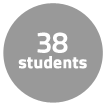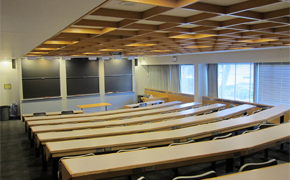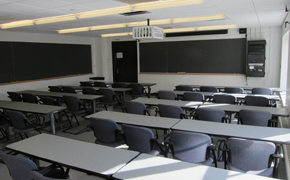Instructor Insights pages are part of the OCW Educator initiative, which seeks to enhance the value of OCW for educators.
Course Overview
This page focuses on the course 16.06 Principles of Automatic Control as it was taught by Professor Steven Hall in Fall 2012.
Principles of Automatic Control is a junior-level classical control class that has been taught by Prof. Steven Hall for six years. He teaches both the lectures and weekly recitations sessions. The course introduces the design of feedback control systems as applied to air and spacecraft systems. Topics include the properties and advantages of feedback systems, time-domain and frequency-domain performance measures, stability and degree of stability, the Root locus method, Nyquist criterion, frequency-domain design, and state space methods.
Course Outcomes
Course Goals for Students
- Learn the basics of classical control
- Analyze classical control systems and implement the tools of classical control to design control systems for simple aerospace systems
- Acquire a deep conceptual understanding of the material, which will help students identify the right problem solving techniques in future courses and their careers
Possibilities for Further Study/Careers
While most students will enter the aerospace engineering field, few will work specifically in control engineering. This course will give students an awareness of control systems so they can collaborate with those in the field.
Peer inside the recitation of Prof. Steven Hall’s classical control class and you’ll see the entire class up on their feet actively engaged in working out problems. Unlike conventional classrooms where the instructor leads the class and demonstrates how to solve a problem, students in 16.06 openly work and struggle with the recitation problems together. They learn by doing with Prof. Hall stepping in to coach as needed.
In this Instructor Insights section, Prof. Hall introduces his active learning recitations and explains how active learning techniques promote deeper conceptual understanding. The approach helps him be a more responsive teacher while fostering student engagement.
It really is a chance for students to understand what they know and what they don't know and to exercise the skills that they have learned in the class.
— Prof. Steven Hall
In this video, Prof. Hall offers a window into his classroom and introduces the active learning
approach he employs to teach classical control systems at MIT.
In following pages, Prof. Hall discusses specific aspects of how and why he uses active learning in 16.06 recitations:
- Acclimating Students to Active Learning
- Adapting the Classroom for Active Learning
- The Advantages of Active Learning
- The Experience of Teaching an Active Learning Recitation
Curriculum Information
Prerequisites
Requirements Satisfied
- 16-1 and 16-2 degree core curriculum requirement
- Interchangeable with 16.07 for the 16-ENG core curriculum requirement
Offered
Every fall

Breakdown by Year
Mostly first semester juniors with the occasional graduate student
Breakdown by Major
Mostly aerospace engineering students with a few mechanical engineering students
Typical Student Background
16.01-16.04 Unified Engineering I-IV, but a background in 18.03/18.034 Differential Equations and some dynamics (2.003 Engineering Dynamics) and signals work (6.003 Signals and Systems) is sufficient
Ideal Class Size
Twenty for each recitation session to promote the right balance between student engagement and individualized instruction
During an average week, students were expected to spend 12 hours on the course, roughly divided as follows:
Lecture
- Mandatory attendance, three one-hour lectures each week
- 37 lecture sessions total
- Professor used chalkboard to explain problems and concepts
- In-class activities included concept questions
Recitation
- Mandatory attendance once a week at an hour long recitation
- 13 active learning recitations total
- Two sections of approximately 20 students
- One to two problems were tackled in class
- Pairs of students worked collectively on problems at the board with guidance from the professor and TA circling the room
- Group work concluded and class reconvened with the professor working through the problem and highlighting common problems
Out of Class
Semester Breakdown
| WEEK | M | T | W | Th | F |
|---|---|---|---|---|---|
| 1 |  |  |  |  |  |
| 2 |  |  |  |  |  |
| 3 |  |  |  |  |  |
| 4 |  |  |  |  |  |
| 5 |  |  |  |  |  |
| 6 |  |  |  |  |  |
| 7 |  |  |  |  |  |
| 8 |  |  |  |  |  |
| 9 |  |  |  |  |  |
| 10 |  |  |  |  |  |
| 11 |  |  |  |  |  |
| 12 |  |  |  |  |  |
| 13 |  |  |  |  |  |
| 14 |  |  |  |  |  |
| 15 |  |  |  |  |  |
| 16 |  |  |  |  |  |
 No classes throughout MIT
No classes throughout MIT Lecture
Lecture Assignment due
Assignment due No lecture session scheduled
No lecture session scheduled Recitation
Recitation Exam
Exam

 Room 1 of 2
Room 1 of 2 
